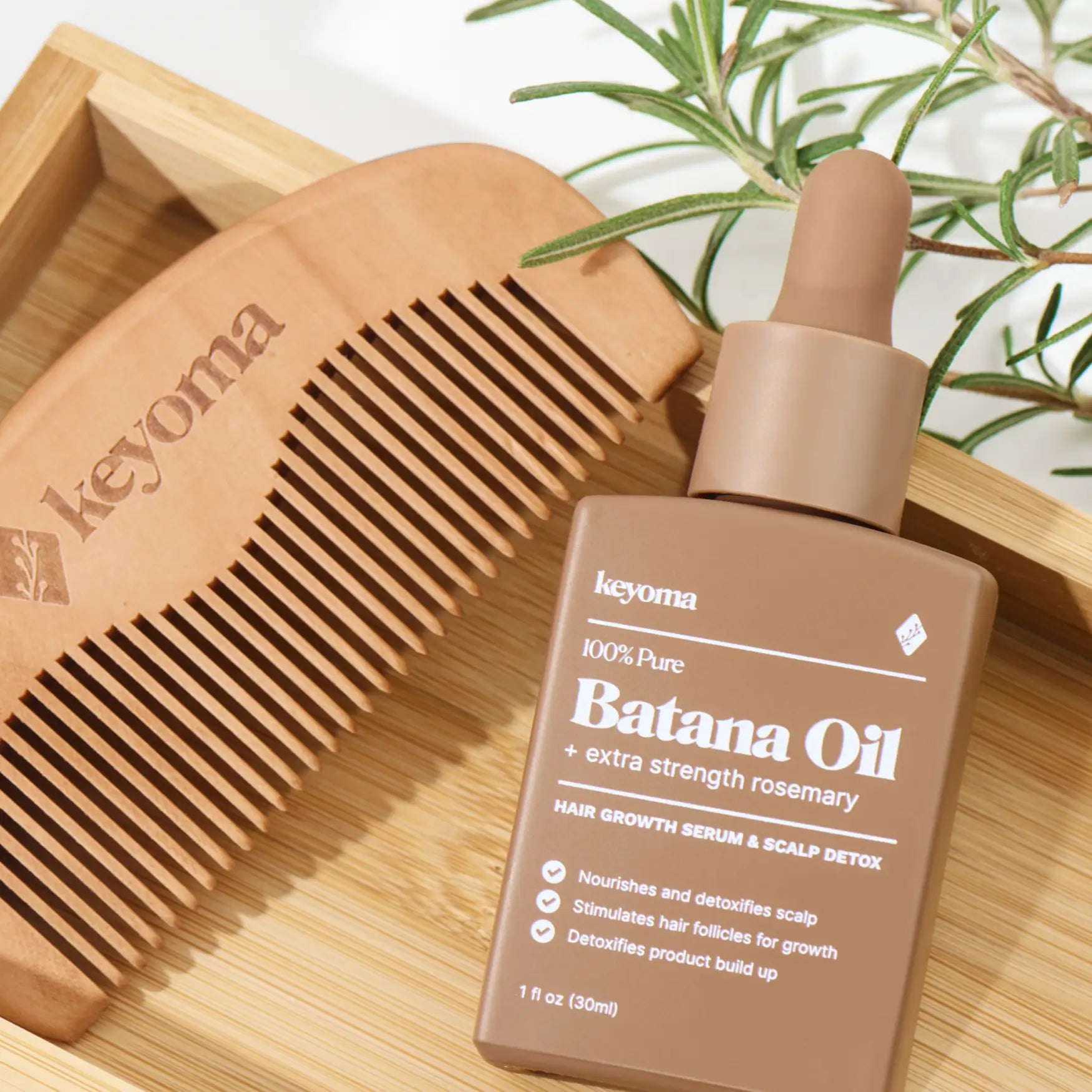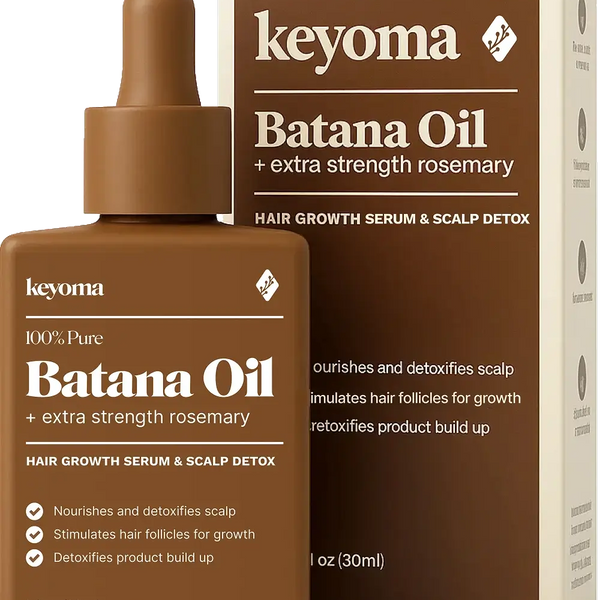In this article
You’ve likely heard the term hair follicle, but you may not know what it really is or how a follicle gets damaged. Hair length gets most of the attention, while the scalp, roots, and follicles often get skipped in daily care. Still, as any stylist will say, hair stays healthy only when it’s nourished from root to tip.
Here’s a simple walk-through of the signs of stress to watch for and the habits that can help keep your follicles and hair well nourished.
Key Takeaways
-
Hair follicles can be damaged by heat, chemicals, tight styles, pulling, or injuries.
-
Damage often shows as thinning, shedding, premature graying, or dryness from reduced sebum.
-
Some causes lead to scarring alopecia where destroyed follicles cannot regrow hair.
-
Minoxidil, PRP, scalp massage, balanced nutrition, and looser hairstyles may support follicles.
What Is a Hair Follicle?
A hair follicle is a tube-shaped pore that surrounds a hair’s root and shaft. Follicles live within the top two layers of your skin. You’re born with over 5 million follicles in your body and more than one million on your head. As you age, new hair grows out from these follicles.
Hair follicles are among the few body structures that can switch off and then restart (degenerate and regenerate). That stop and start ability supports hair growth across your body.
What Damages Hair Follicles?

Follicles sit inside skin openings where hair forms. When they’re harmed, thinning and even hair loss can follow. Knowing the usual culprits helps you take steps to protect your scalp and strands.
Heat-Based Styling Tools
Heat from blow dryers, flat irons, and curling irons can inflame follicles and weaken strands, which makes splitting and breakage more likely. Let hair air dry when you can and use the lowest heat setting to lower the risk.
Scalp Trauma
Cuts, surgical incisions, or other scalp injuries, including intense scratching, can harm follicles. As the area heals, a scar often forms. Scar tissue lacks follicles, so the spot typically stays bald.
Tight, Traction-Prone Hairstyles
Tightly pulled styles place constant tension on follicles. Ongoing stress can cause damage and a permanent loss called traction alopecia.
It most often shows along the hairline and at the temples. Keep braids, ponytails, buns, and other updos looser, and rotate in styles that don’t pull to ease strain on your follicles.
Scarring Alopecia (Cicatricial Alopecia)
Scarring alopecia, also called cicatricial alopecia, is another source of follicle damage. It refers to a group of disorders marked by intense scalp inflammation and permanent loss. The exact cause is unclear, though infections, chemical treatments, and autoimmune disease are possible triggers.
Once follicles become scarred, hair typically doesn’t grow back in that spot. Prescription anti-inflammatory medicines may help prevent further injury, so it’s important to seek care early if you notice unusual thinning or heavy shedding.
Chemical Hair Treatments
Permanents, hair dyes, relaxers, and similar chemical services can injure follicles and the hair itself, which may lead to thinning and shedding. Repeated processing can destroy a follicle, leaving it unable to regrow hair later. That’s why bald patches that appear can become permanent.
Sticking to a single chemical process and stretching the time between touch-ups may lower the chance of serious damage.
Hair-Pulling (Trichotillomania)
Trichotillomania is a mental health condition that creates strong urges to pull hair from the scalp, lashes, and other sites. Many people pull when they feel stressed or overwhelmed.
Repeated pulling can injure follicles, leading to thinning and shedding. If follicles are destroyed, the loss can be permanent. Counseling and medications may help people with trichotillomania manage urges.
How to Tell If Your Hair Follicles Are Damaged

Because follicle vitality closely tracks your overall hair health, you can notice when your scalp has more than a few damaged follicles.
Premature Graying
If a follicle is damaged, the internal matrix may be affected as well. Because the matrix holds pigment-producing cells, your follicle might stop producing colored hair. Hair is actively pigmented in the anagen phase and is turned off during the catagen phase and absent during telogen.
In graying follicles, there’s cellular injury along with loss of pigment-producing cells. So if you do have one (or more) damaged follicle, you may see gray or white strands sooner than expected.
Hair Thinning and Loss
A major sign of damaged follicles is gradual thinning that can progress to hair loss. Researchers observed that damage often disrupts the hair growth cycle.
For instance, telogen effluvium (a temporary form of loss) occurs when an increased number of hair follicles prematurely enter the telogen stage. This can cause heavy shedding without progressing to true baldness.
By contrast, androgenetic alopecia (commonly called female and male pattern baldness) develops as each anagen phase gradually shortens. Each cycle yields a shorter hair, which eventually results in visible loss. That process also explains the receding hairline often seen with this condition.
Traction alopecia (or traction folliculitis) is another frequent cause linked to damaged follicles. Constant pulling at the roots creates mechanical injury that can lead to loss.
Dry Scalp and Hair
Damage can also influence the nearby sebaceous gland. Remember, follicular stem cells help regenerate both follicles and the sebum-producing glands.
Current evidence suggests that when the scalp is injured, bulge-area stem cells may lose their ability to restore the sebaceous gland. The result is little to no sebum, which leaves hair and scalp dry.
Treatment Options for Damaged Hair Follicles
If your follicles are damaged but not beyond saving, there are ways to support them and, with time, encourage healthier growth:
Massage Your Scalp Daily
A quick daily scalp massage can help stimulate follicles and support growth. Before you start, warm 2 to 3 drops of Keyoma’s Batana Oil between your fingertips and apply it to your scalp. It reduces friction while you massage and may improve blood flow around dormant follicles. Use gentle circular motions for five minutes each day.
Consider PRP Therapy
PRP (platelet rich plasma) therapy uses a small sample of your blood to support healing in the body, and it can be applied to stimulate follicles and address hair loss.
At a clinic, your blood is drawn, processed, and injected into areas that need it most, such as an uneven hairline. Results commonly appear within three to six months.
Use Hair-Loss Medication
Medication can sometimes help when follicles are struggling. Over-the-counter minoxidil is a topical option. It’s thought to improve blood flow to the scalp, which may wake up dormant follicles.
There are also medications that reduce dihydrotestosterone (DHT), including finasteride and dutasteride. Both require a prescription and are available only to people assigned male at birth. They work by blocking the hormone that causes male pattern baldness.
Follow a Balanced Diet
As you eat to fuel your body, your follicles also need steady nutrients. So what belongs in a hair-healthy diet plan? Think lean proteins, iron-rich foods, and biotin sources, for example. If you think you’re low on key nutrients, speak with your doctor or a dietitian. They may recommend suitable supplements, like vitamins A and E, to support healthy follicles.
Heal Your Follicle With Safe Scalp Habits With Keyoma
Damaged hair follicles can result from various factors, including heat-based styling tools, scalp trauma, tight hairstyles, chemical treatments, and even hair-pulling habits. Recognizing the signs of damage, such as premature graying, hair thinning, and a dry scalp, is crucial for early intervention.
While treatments like scalp massages with Keyoma's Batana Oil, PRP therapy, and hair-loss medications can help, adopting safe scalp habits is essential for maintaining follicle health and promoting healthier hair growth.
Featured Product
100% Pure Batana Oil + Rosemary









